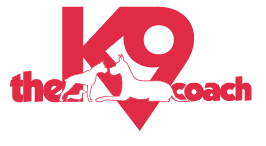How to Stop Puppy Biting
Ouch! That really starts to hurt with sharp little razor teeth and it hurts even more with they get their real teeth. It’s an unwanted behavior that needs to stop at the puppy stages of development and not be permitted to continue at all.
This is a skill that is typically taught by littermates and the Mama Dog. Unfortunately, for many rescue dog and some less reputable breeders, pups are not with their Mom long enough. We suggest 7-8 weeks of development before separating the litter.
It’s typical behavior for puppies. They experiment with everything and the mouth gives them a ton of information.
So how do you stop this unwanted behavior? Easy!
(It’s really easy with young puppies who have not had long to really create this bad habit)
Approach
In this case you do get to squeal — like it hurts. Abrupt, sharp “ouch!”
Playtime ends, your hands are put behind your or in your pockets. No flailing them around.
Get up and leave the puppy alone for a few minutes.
Redirect puppy to something more suitable to go in his mouth.
The puppy needs to start to learn that he is the reason the fun time with you ends. Teeth on skin, game over and you leave him alone.
If he’s getting really amped up and escalated his behavior after a couple of attempts using the method above without success, put him in his crate for a little rest. Fatigue in young pups can make the frustrated and nippy.
4 month old Great Dane Puppy. He needs to learn some bite inhibition — and with the size difference we humans have to step in. Always supervise.
Yes, this issue gets challenging with some dogs and is critical that you nip it in the bud quickly and effectively.
Other Approaches for more mature (> 4 months old)
Some dogs are far more difficult to work with on this problem, especially more mature dogs
You may need to look into a more moderate corrective approach, like a Pet Convincer (R) — canned air. Which you use from a stealthy advantage…. dog nips, you spritz and he is caught off guard that his mouth caused cold air to spray across his body. (never spray at their face — it’s high pressured air)
More challenging dogs need even more corrective action, and this is where we might guide you to proper use of a prong or ecollar. Please use these tools only with education.
You are going to hear other people tell you some of the following techniques:
apply pressure to the tongue of the dog — never a twist of the jaw.
wrap the muzzle with calm, gentle pressure and wait for the dog to calm down before release — never a twist of the muzzle.
and sometimes these work, , but not always. None of these methods are 100% for every dog. They just aren’t. And they can be risky – more risky to the dog and you in my opinion than a correction using a prong or ecollar. So be careful and consider at least a phone consult for reviewing the technique.
I will absolutely correct a dog for nipping. This is a potentially dangerous issues that will escalate to real bites to children, grandma etc. This issue left unchecked at a young age creates family frustration and safety risk that lands dogs in shelters- or worse. (And believe me it happens everyday)
(This article is targeted at young puppy training. 8 weeks to approximately 20 months. It might work for some older pups, but in many cases you may need a different approach. If so, seek professional guidance — it can’t often be resolved with a single consultation.)
